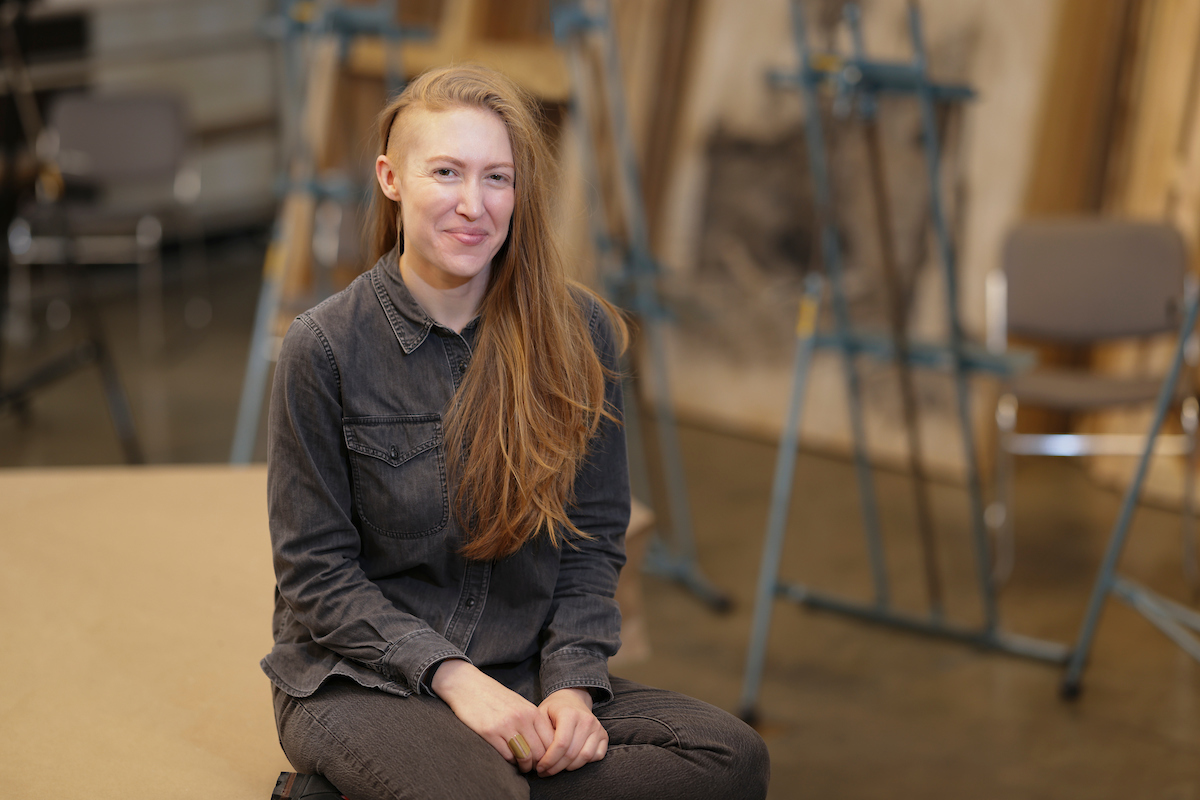New Binghamton University professor bridges gap between art and science
‘Research-creation’ integrates art to confront social, ecological issues

Before moving to Upstate New York to teach at Binghamton, Sarah Nance walked along the entire rim of a volcano in Flagstaff, Ariz. As an interdisciplinary artist who often works with fiber, this was the initial step in a project that links geologic “loop-structures” and textiles. She reached this goal while working alongside the GEODES research program with NASA, where she aided in onsite research of volcanic environments, as well as her own projects.
In her work, Nance creates “shrouds” for ancient environments only accessible via fossil records. These shrouds use collected data to interpret and commemorate the way a landscape exists and responds to change over time. However, this description does not fully encapsulate Nance’s vision for her work, which challenges the barrier between research and art in institutional settings.
“There are often specific parameters for what constitutes successful research, including how that gets recognized by an institution,” said Nance, assistant professor of integrated practice, art & design. “It can be challenging when you want to collaborate with colleagues in another discipline, but you each have very different methods of ‘publishing’ your work, for example. I think [research-creation] can start bridging that gap.”
Research-creation is a term adopted by Nance and others that advocates for the recognition of artistic output as a research practice. Proponents of the term posit that creative work can respond in unique ways to mounting social and ecological issues. When art is recognized as a form of research itself, it can open a researcher or an audience to a perspective that is otherwise lost in a struggle for scientific objectivity.
Take, for instance, “marseille tidal gauge aria,” in which Nance takes tidal wave data from Marseille, France and turns it into a vocal performance, each data point corresponding to a note in her vocal range. The operatic piece is set to this poem from Rasu Yong-Tugen’s Songs from the Black Moon:
“In eternal night
we had each burned the forest
in order to better see.
Clouds of sorrowful ravens
drifted upwards,
imperceptibly blotting out the stars.”
The data, recorded from 1884-2014, shows how the unique tidal patterns of Marseille are affected by natural trends, as well as human activity following the Industrial Revolution. Nance’s voice starts low and trends upward, with various aberrations and climaxes, granting vigor and urgency to a 130-year progression of rising sea-levels. Climate change awareness messaging is usually attached to a singular sentiment, but Nance is interested in communicating more than just fear, hope or anger. These are valuable sentiments, but in her work, Nance aspires to a more nuanced expression in order to develop a working emotional investment in the Earth for her and her audience.
“I think that [poem from Songs From the Black Moon] captures a lot of the complexity of emotional experience that I’m trying to convey. Being in an eternal night would be a terrible experience as a human,” said Nance. “In this poem, the subjects’ reaction to being in that eternal night is to burn the forest just to see a little better. The gut-wrenching outcome is that the birds fly away and blot out the stars — the only bit of light that was there to begin with. And so, in an attempt to make things better in the moment, the world in this poem is forever worse.”
Nance empathizes with the human desire for beauty or comfort, and the sometimes ecologically harmful actions people take in desperate situations. This acknowledges, but does not justify, the impulse of many people to discount climate change in favor of issues that are more personally pressing. Scientists have found it difficult to connect people and their emotions to the effect climate change is having on the Earth, and ultimately, humanity. Nance’s style of work attempts to achieve this by embodying geologic processes and nurturing an empathetic relationship between the Earth and its inhabitants.
“I think of both science and art as exploratory and invested in different ways of knowing about the world. Science, even though it’s based on human observation and, therefore, retains some subjectivity, attempts to get as an objective view of things as possible, whereas art often intentionally centers a human experience,” said Nance.
Nance currently teaches drawing classes and is developing a curriculum for her spring 2024 class “Knitting & Catastrophe.” The class will use knit textiles as structures for expressing positions of protest or transformation, as well as focus on the social implications and generative potential of catastrophe. Through teaching, Nance hopes that a reciprocal relationship with students and their passions can inspire new projects or student programs for collaborative work in art and science.
“Hearing 20 different project ideas from students in one class inevitably sparks some idea, or helps me work through a problem, because I’m constantly shifting my own way of thinking to help someone else think through their project,” said Nance. “In the interdisciplinary positions I’ve been in, I’ve seen students gravitate toward fiber and performance, which informs which classes I want to offer. I want to engage that interest and give students a solid pathway forward into something that they’re curious about exploring.”

